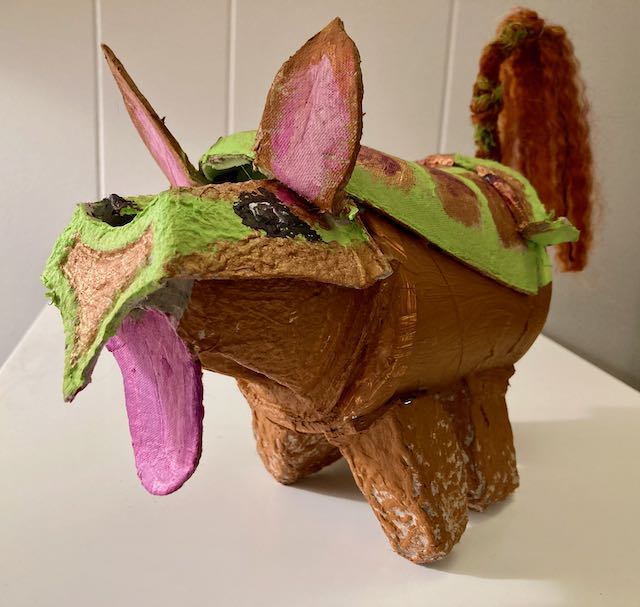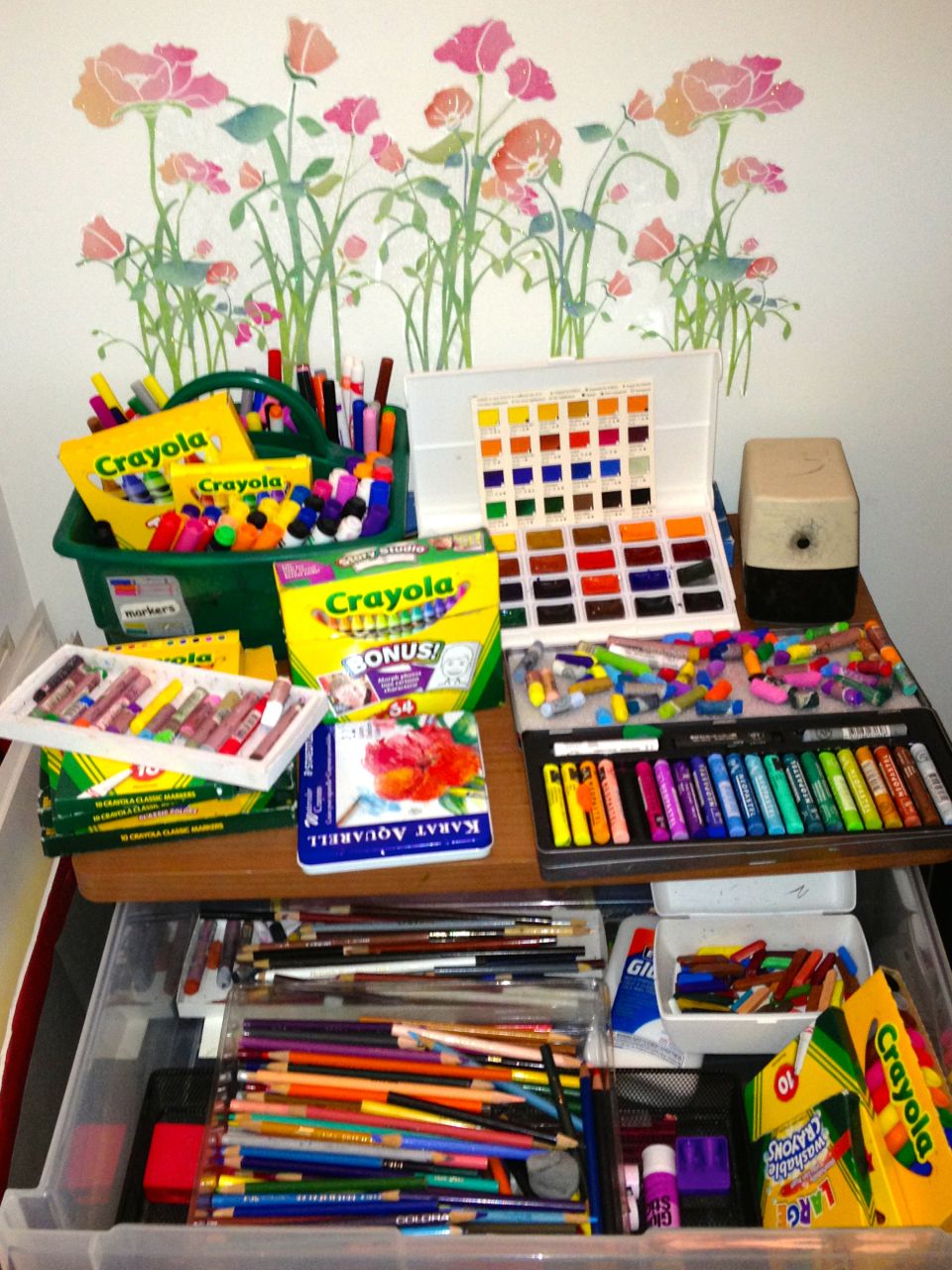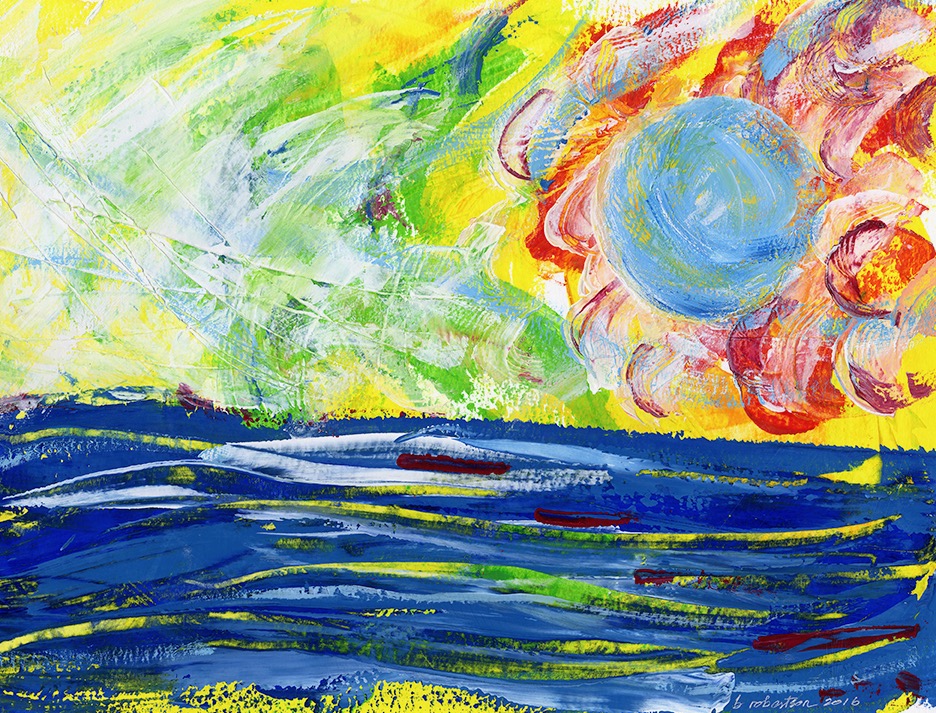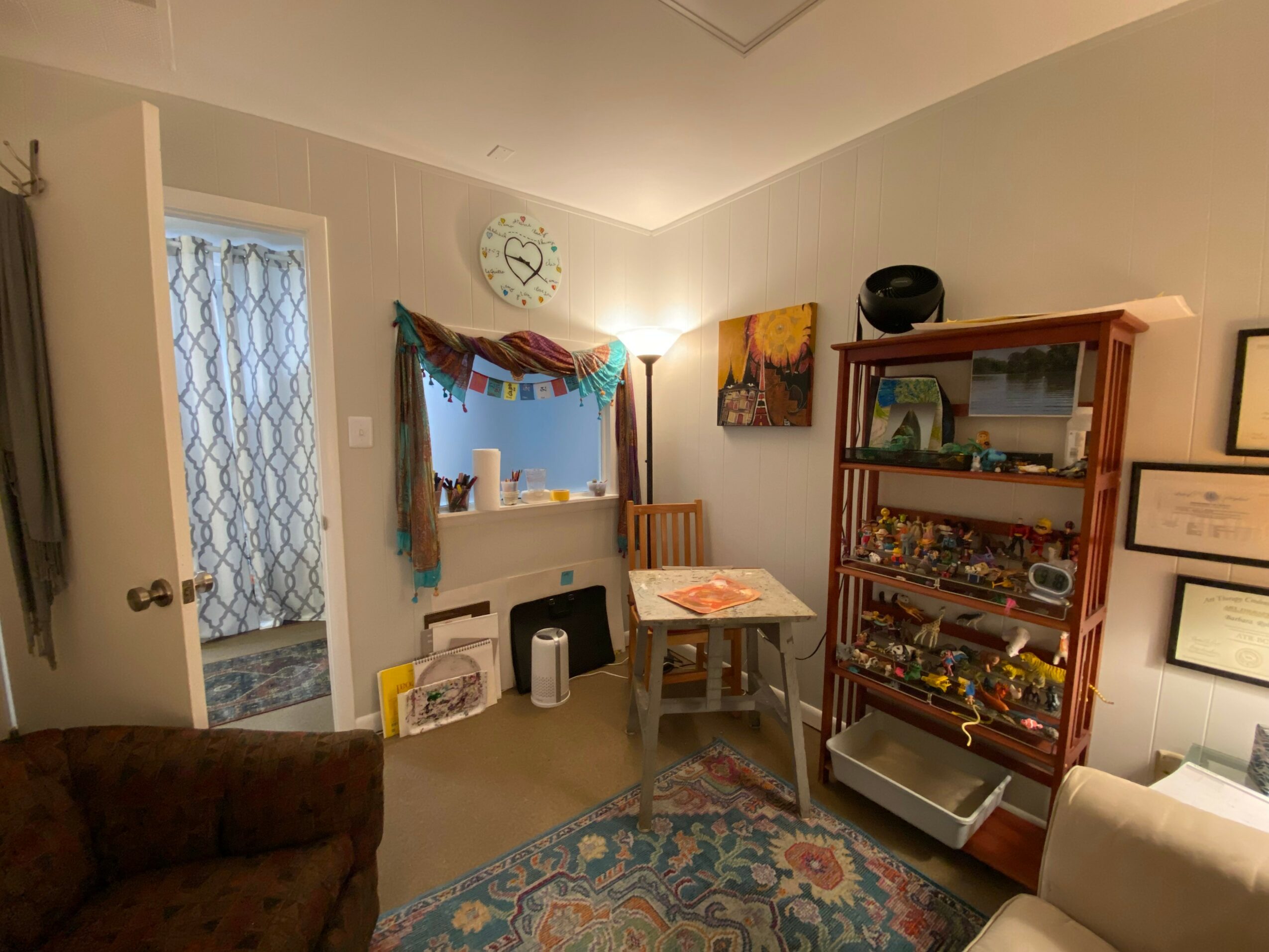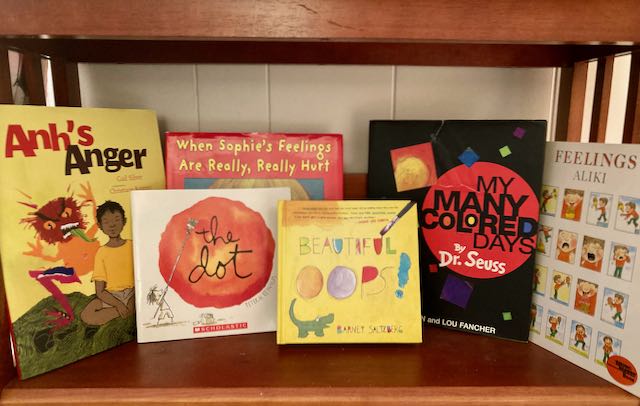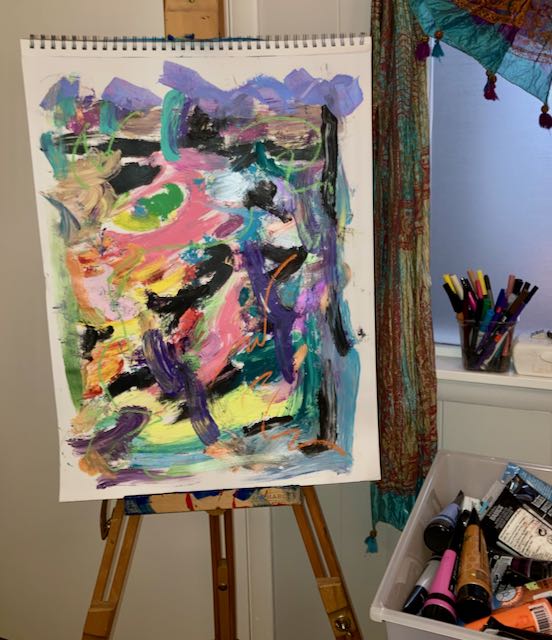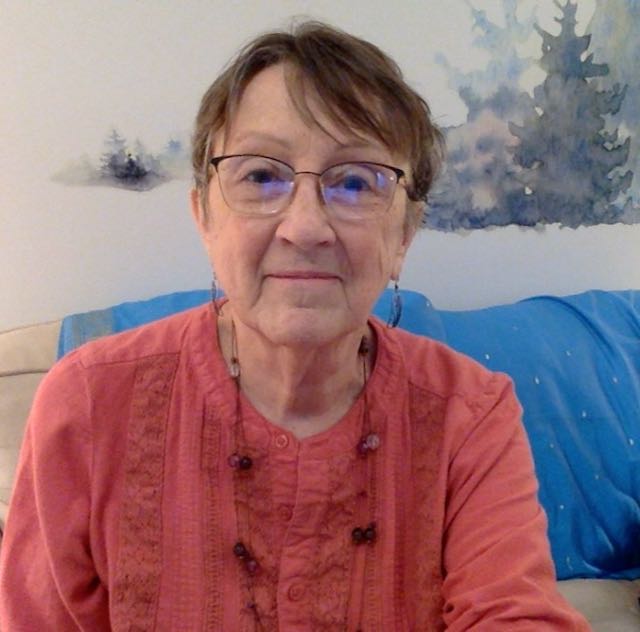

Today we’d like to introduce you to Barbara Robertson.
Hi Barbara, we’d love for you to start by introducing yourself.
I’m Barbara Robertson, an artist and art therapist, now in private practice seeing individual clients, from children and teens through adults of all ages.
I had earned an undergrad degree in Fine Arts in the early 70’s, followed by a Master’s in Art Education in the early 80’s, and worked in multiple art-related fields: teaching art at community arts centers, doing graphic design before computer technology came along, working in 3D with ceramics, then wearable art, then multimedia sculpture. I showed and sold my original work at craft fairs, in galleries and showrooms and with an art representative. Your typical ADD-influenced career of many shifting versions, all relating in some way to art.
I first encountered art therapy in conversation with another mom who told me about being in an art therapy group and how healing the experience was for her. This was congruent with my own experience in past therapy with someone who had urged me to use drawing in a new and spontaneous manner.
I found it helped me to release long-pent-up emotions for myself. From that point, I began to notice other references to art therapy. I became so intrigued that I found and enrolled in the art therapy program at a university near my home, and completed the program in two years, with practicum placements, doing art therapy under supervision, each year.
Coursework in the program involved learning psychiatric diagnoses as well as the impact of trauma and other sources of deep distress, along with the creative process, and how different kinds of art media affect our psycho-neruo responses, i.e., fluid media like paint can be overstimulating for people with poor self-regulation, or can be really hard to manage for people who rely on rigid control for a sense of safety.
I work with “the kids” in all ages of people. That is because we retain some imprint of our early experiences of vulnerability or rejection or loss, which then shaped our adult selves and our blueprints for relationships with individuals and society in general. We develop a set of expectations that are often not borne out in our adult relationships but feel almost hard-wired into us so it becomes very hard to see when reality is different from what we expected. I feel a particular affinity with people who have failed or damaged early attachment experiences, or who struggle to trust others, make healthy connections and find a place for themselves in a larger community.
I believe that within each of us is a kind of Core Self that has a tremendous capacity for loving and being loved. It is possible for us to “reunite” with the parts of ourselves we’ve had to “let go of” or push out of our awareness when attachment fails or we find ourselves rejected. We can re-integrate those essential parts of our authentic identity, and begin to function in a way that brings our potential for creating and connecting into a much more active role in our every day lives
I find that making art in therapy helps my clients to find their sense of authenticity, broaden their awareness of their strengths, and of their belonging in the world. The art they create somehow anchors their experience of themselves, their relationships and surroundings, better able to navigate those experiences without losing themselves.
One major challenge has been, and will likely always be, managing my own internal responses to my clients and what they bring into each session, so that I can offer a “clear channel” for responding to their needs without confusing those needs with my own.
Practicing art therapy has brought me great satisfaction and a deep sense of connection with my clients. I feel honored and privileged to witness someone else’s creative process and to observe them moving into deeper connection with themselves. There’s nothing like it, for me, to witness someone who has been deeply hurt, as they begin to feel their worth in a deep and self-compassionate way that is clearly new and unexpected for them.
I’m sure it wasn’t obstacle-free, but would you say the journey has been fairly smooth so far?
Something I wish I had known before I starting working as an art therapist is how valuable it is to be in therapy for oneself. I was told this but did not feel that I could afford to do it, and so I waited far too long to begin my own therapy with an art therapist. Early on in my career and education, there simply were not many whom I could access near my home, and later I felt that out of pocket costs would be too high. In hindsight I might better have considered the cost of therapy as part of my graduate school tuition.
Once I did start going to my own therapy with a more experienced art therapist, I have continued to do so and will keep on as long as possible. It has been invaluable to me as a practitioner and as a person. It keeps me more awake and aware of my clients’ experience in session, and I feel it makes me a much better therapist. As I learn to trust in myself through my therapy work, I find I am better able to trust in the client’s inner wisdom, and in the process of making art and
taking in its message.
Thanks – so what else should our readers know about your work and what you’re currently focused on?
One notable aspect of my life as an artist and art therapist is that I have struggled to stand in both camps at the same time. I had done reasonably well for myself in continuing my own creative artistry over the course of my twenties, thirties and forties. I discovered the field of art therapy as I was nearing 50. Once I had embraced that path, my own art making came to a halt, mainly due to the time and effort required to manage the workload and raise our two kids. I was continuing to use my creative energies in learning and practicing art therapy. That alone was sufficiently satisfying for a number of years. As my children grew to adulthood and life opened up more opportunities to shape my own work life, I chose to start my own private practice after years of working in psychiatric inpatient hospital settings.
Once I had more free time as my own boss, I faced a dilemma – I no longer felt competent at making my own artwork and I felt that somehow I could not meet a standard I imagined was necessary to be “an artist.” I feared I would find my talent and skill lacking as a professional artist. I was suffering form some of the same hidden beliefs I had been working with in my clients . Oddly enough, it was not until I gave myself permission to PLAY with some paints instead of intentionally “making art” that I discovered what it felt like to be attuned with my inner self. Little by little, I found my way back to the joy I had experienced as a child who drew and painted and built and created for fun throughout my childhood.
One one particular day, I completed a simple line drawing of one of my grandsons with a fierce expression on his face. Suddenly I felt a surge of joy and the words “I’ve got my chops back! I’ve still got my chops!” delighted that I had more skill at representing an image in the way I wanted to see it. Now I allow myself to check in with my heart before I make some art, to be sure I’m working hand in hand with my heart.
As I made many pages of paint strokes spread over the whole surface in a wild array of colors, I began to see more and more choices in what I could do for myself. At some point I realized that these pages full of mixed-together colorful strokes would make wonderful backgrounds for drawings in oil pastel, which would pick up and even exaggerate the texture of the paint strokes beneath them as I drew. I began with photos of familiar people, but because my focus as a therapist is so heavily on emotions, I began to focus on making portraits of emotional states, rather than portraits of individuals. As they say in fiction disclaimers, any resemblance to a real person is purely coincidental, LOL, but resemblances to real emotions is the point, inviting my viewers to sense what that’s like for themselves when that feeling comes up.
With this body of work, unlike in previous segments of my creative life, I feel that I am completing a whole that will speak my truth about how I see us human beings fitting into this world. How we’re related to the past, even to the most primeval of times, and how all of us are connected in an infinite forward-and-backward way that is both earthly and spiritual. Not about religious beliefs but about the spirit of divine love and acceptance, the gift of being a part of reality and seeing it unfold moment by moment over the course of life. This and more I want my art to contain and speak.
And whether any others see or hear what I imagine my art is expressing is totally irrelevant to me, as long as anyone who sees it feels their own permission to see in it whatever might be meaningful to them. I want us all to know the value of our own truth. In therapy and in my artwork, that is my intent. Our own truths matter.
Where do you see things going in the next 5-10 years?
I hope the profession of art therapy will be accepted by all 50 state legislatures as a clinical health-care profession, as a healing treatment for mental health care and for those with many other kinds of suffering. I want all of us to know that making art in response to experience makes us less alone, assures us of belonging and of our worthiness to be healed and loved and cared for. So far only about 1/3 of the states have recognized and encoded the healing power of making art in therapy. We must make it more widely known and accepted, and accessible to anyone who might benefit, even if they don’t believe they are artistic or creative. Making art for oneself, for one’s own wellbeing, frees us from the judgments of others and from the expectation of art as an object of beauty. Unless, like me, you see a page of forcefully scribbled dark lines that allows frustration and fury to flow onto the page as an object of beauty, because of its honesty, clarity and universality revealing part of what it is to be human.
Pricing:
- I do not accept insurance for art therapy.
- I offer a sliding scale if you are not insured and can not afford the full fee.
- My standard fee is $150 for a 50-minute session.
Contact Info:
- Website: robertsonarttherapyllc.com
- Facebook: https://www.facebook.com/brobertsonarttherapy/
- LinkedIn: https://www.linkedin.com/in/barbara-robertson-ba9882178/
- Other: https://global-podcast-network.simplecast.com/episodes, enter Barbara Robertson in Search Bar.
